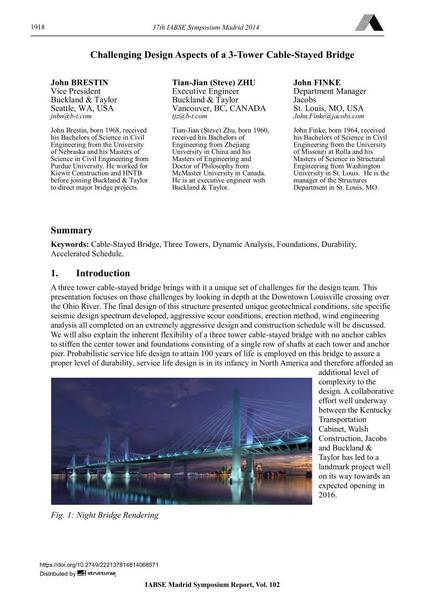Challenging Design Aspects of a 3-Tower Cable-Stayed Bridge

|
|
|||||||||||
Bibliografische Angaben
| Autor(en): |
John Brestin
Tian-Jian Zhu John Finke |
||||
|---|---|---|---|---|---|
| Medium: | Tagungsbeitrag | ||||
| Sprache(n): | Englisch | ||||
| Tagung: | IABSE Symposium: Engineering for Progress, Nature and People, Madrid, Spain, 3-5 September 2014 | ||||
| Veröffentlicht in: | IABSE Symposium Madrid 2014 | ||||
|
|||||
| Seite(n): | 1918-1925 | ||||
| Anzahl der Seiten (im PDF): | 8 | ||||
| Jahr: | 2014 | ||||
| DOI: | 10.2749/222137814814068571 | ||||
| Abstrakt: |
KYTC's project requirements and the design/build team's drive to reduce cost and shorten construction schedule led to the development of a three-tower cable-stayed bridge with a flexible foundation system in the longitudinal direction. Working through the site specific challenges and external constraints the design team was able to deliver an affordable solution that could be built in a short period of time. The key measures taken by the design build team to address these unique challenges included the following:
The end result is a durable structure that will grace the Louisville Skyline for years to come. |
||||
| Stichwörter: |
Schrägseilbrücke Dauerhaftigkeit dynamische Berechnung
|
||||

